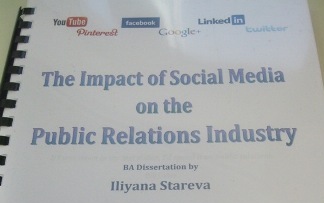Journalism and Public Relations go hand in hand. Journalists need PRs to provide them with stories, facts and figures and access to spokespeople etc., whereas PRs need journalists to feature these stories in media outlets to gain exposure. However, in today’s world, strongly dominated by social media, journalists can themselves find plenty of information online and often so they come across such on social media platforms like Twitter or LinkedIn.
According to a research by Cision social media has become an embedded part of the daily work routine of UK journalists with the majority of them using two or three social media tools regularly for professional reasons. (Below you’ll find a webinar that talks about the findings in more detail.)
This in turn is not much of a surprise – we’ve all seen how traditional media has been struggling because of the growth of digital. But is print really dead? Is the future of journalism digital? I guess we’ll find out soon enough. Undeniably though what matters for journalists is not so much the source (print, digital or social media), but the quality and reliability of the information from that source.
Understanding the implications of social media’s impact on journalisms, as Cision calls it ‘social journalism’, can provide PROs with more effective ways of pitching journalists and building good media relations.
Here are some of the most interesting findings that PR professionals should take into account before approaching the media:











